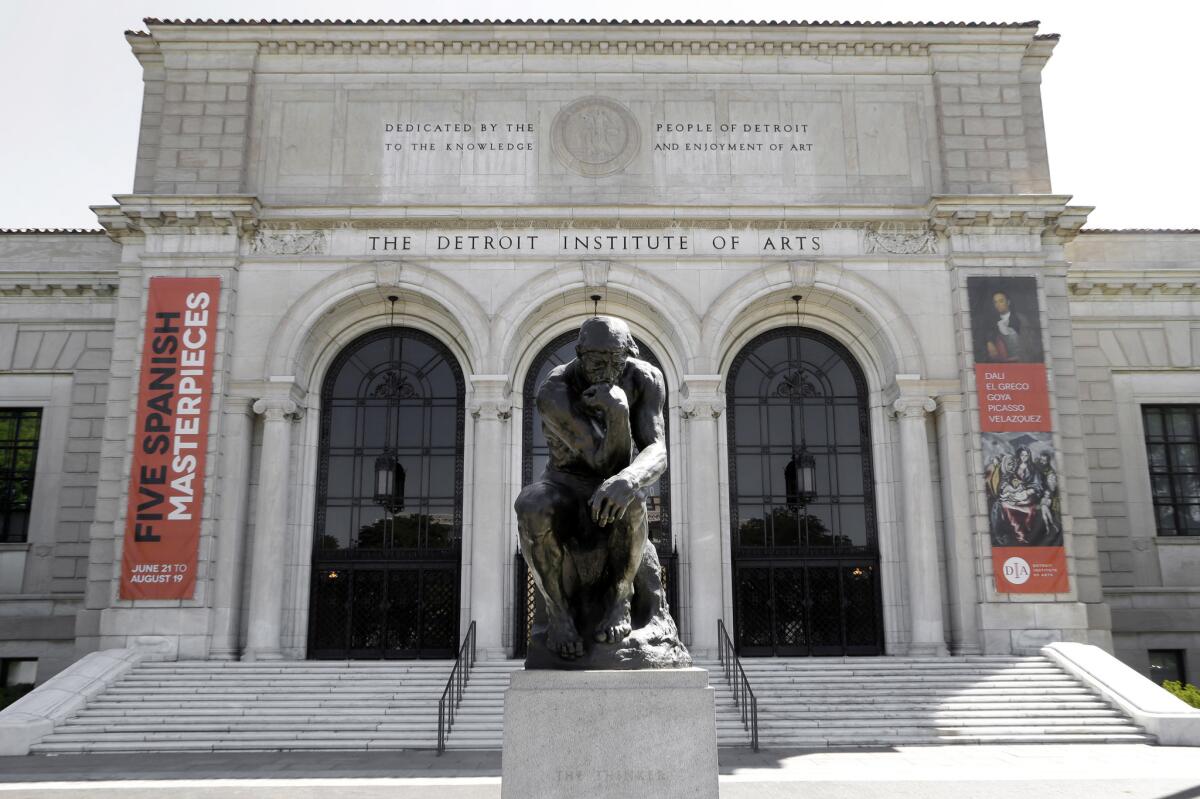Detroit Institute of Arts collection worth billions, report says

- Share via
The permanent collection of the Detroit Institute of Arts could be worth as much as $4.6 billion, according to a new report that also said the museum would see only a fraction of that amount if the city proceeded with its controversial plan to liquidate the prized collection.
A study published Tuesday from the New York art investment firm Artvest Partners estimated that the DIA collection is worth $2.8 billion to $4.6 billion. In reality, the collection would sell for just $1.1 billion to $1.8 billion, it said.
The difference is due in part to art-market trends; some parts of the market are considered to be stagnant.
The report said that selling the DIA’s most valuable works “would deprive the museum of its core attraction, drastically reduce attendance and related revenues” and would ultimately force the closure of the organization due to a loss of economic stability.
Selling art from the collection also would likely lead to litigation from donors and heirs of former donors, according to the study. The Michigan attorney general would likely try to prevent the sale of any works that are deemed to be held in public trust.
Detroit’s leaders are weighing whether to sell off items from the 66,000-piece collection as the city grapples with the effects of bankruptcy. Earlier this year, city leaders moved to appraise the museum’s entire collection, versus just a portion of the art that was previously under consideration.
Tuesday’s report was commissioned by city leaders and was delivered to them this week, according to the Detroit Free Press, which has posted the report online.
An earlier appraisal by the auction house Christie’s estimated the value of art bought with public funds at the DIA to be worth $454 million to $867 million. The collection consists of art that was purchased with public money as well as works donated to the museum by individuals.
Follow @DavidNgLAT on Twitter
More to Read
The biggest entertainment stories
Get our big stories about Hollywood, film, television, music, arts, culture and more right in your inbox as soon as they publish.
You may occasionally receive promotional content from the Los Angeles Times.










